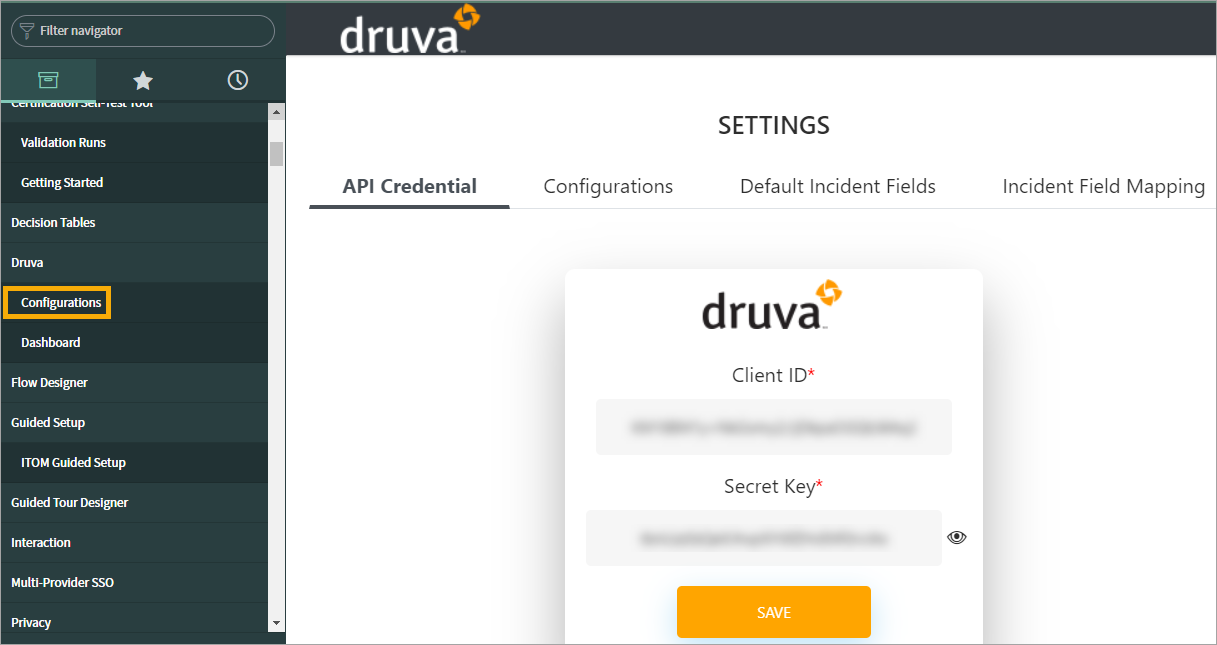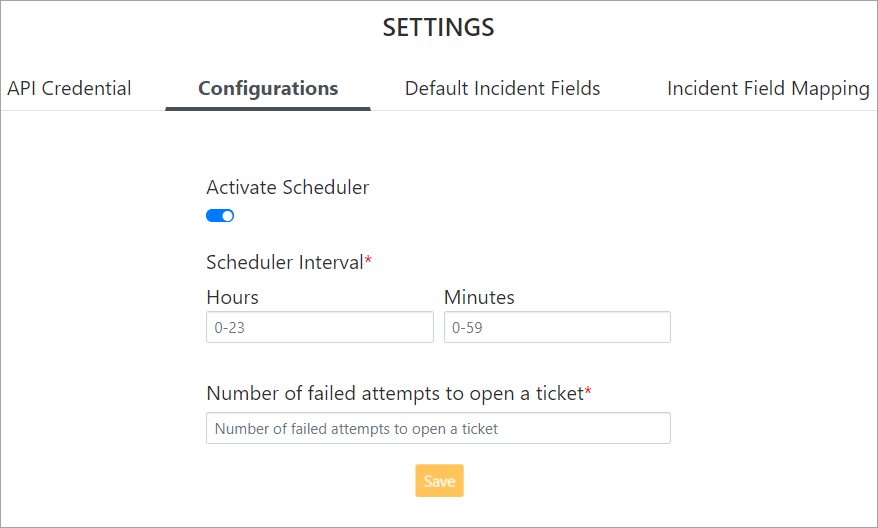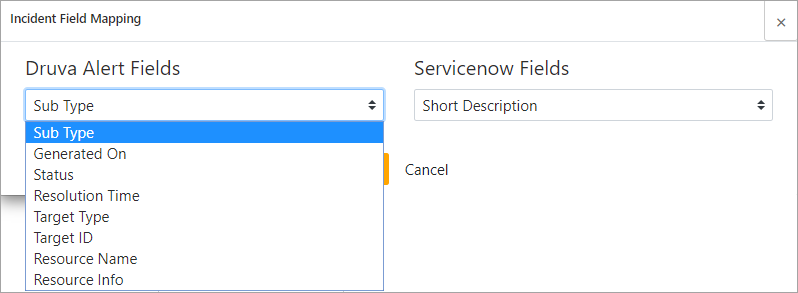How to configure Druva ServiceNow app
Overview
Druva - ServiceNow integration provides you with an automated and centralized ticketing system that helps you get notified about failed backup incidents across Druva Phoenix workloads without even logging into the Phoenix Management Console or waiting for an email.
By eliminating the manual efforts of monitoring and tracking backup status from the Phoenix Management Console, the Druva ServiceNow app enables you to take proactive action against the failed backup incidents and provides you with the required operational ease for incident tracking and management.
With a few simple steps, you can configure the Druva ServiceNow app that provides you with a standardized and automatic ticketing system.
Before you begin
Ensure that you meet the following requirements:
- You should be able to log into the Druva Cloud Platform Console as a Druva Cloud administrator.
- You must have enabled the API Credentials feature for your account.
API Credentials are a combination of the Client ID and Secret Key and are required to establish an authentic connection between the ServiceNow and Druva app, while you configure the Druva app for ServiceNow.
If you do not have the API Credentials feature enabled for your account, contact Druva Support.
Procedure
Step 2: Configure Druva for ServiceNow
- Access the ServiceNow Store.
- Enter Druva in the search bar to search the Druva app in the ServiceNow Store.
- Click Request App to install the Druva app to your ServiceNow Dashboard.
- On the left navigation panel, select Druva > Configurations. The Settings page for Druva ServiceNow app appears.

- On the API Credentials tab, enter the Client ID and the Secret Key that you generated in Step 1 and click Save.
- Select the Configurations tab and set the Activate Scheduler to the active position. Enter the values as applicable and click Save.

Field Action Configurations Hours and Minutes This is the timeframe within which the Druva ServiceNow app scans for any failed backups.
If any failed backups are identified within this timeframe, an incident ticket is created.Example scenario:
- If you type 3 in the Hours field, the Druva ServiceNow app scans if there are any failed backup every three hours.
Note: The creation of a ticket for an incident is subject to the value that you enter in the Number of failed attempts to open a ticket field.
It is recommended to set the scheduler interval to the same value as the backup interval for your Phoenix workloads.
Number of failed attempts to open a ticket This is the number of failed backups for which you want the Druva ServiceNow app to create a ticket.
Example: If you type 3, the Druva ServiceNow app will create a ticket only if there are 3 back-to-back failed backups for the duration which you have defined in the Hours and Minutes fields.
The following example illustrates a sample scheduler scenario:
Hours Minutes Number of failed backups Did the backups fail back-to-back? Is a ticket created for this incident? 3 15 3 Yes, all the three backups failed back-to-back within the 3 hours and 15 minutes timeframe 
3 15 3 No, only two backups failed back-to-back in the first 2 hours timeframe after which there were successful backups.
1 backup failed in the last 15 minutes timeframe
- Select the Default Incidents Fields tab. Enter the values as applicable and click Save.

User Select an assignee for the ticket to whom you want to assign the ticket.
Enter the keywords to list the users within your organization. The assignee can then initiate the required action on the ticket.Example: You can assign the ticket to an administrator from a particular department within your organization where the incident has occurred.
Impact Based on the nature of the incident, you can pre-define the level of impact this incident can have on the business operations.
From the dropdown menu, select High, Medium, or low as applicable.Example: Set this value to High if the incident is critical.
Urgency Based on the nature of the incident, you can predefine the priority at which the incident requires a resolution.
From the dropdown menu, select High, Medium, or low as applicable.Example: Set this value to High if the incident requires a resolution on priority.
Assignment Group This is the group within your organization to which the ticket is assigned.
Type the name of the group and select it as applicable.Severity Based on the nature of the incident, you can pre-define how severe the incident is and how it can affect the business operations. Business Service This is the name of the application or service to which the incidents are associated with. - Select the Incident Field Mapping tab. Enter the values as applicable and click Save.
Incident field mapping allows you to associate the fields that are generated from the failed backup incidents from Druva Phoenix to the Serivcenow field.
This enables you to customize the summary of the fields which you intend to see in the email alerts whenever an incident ticket is created.

- Navigate to the Druva ServiceNow Dashboard to view the incidents.

